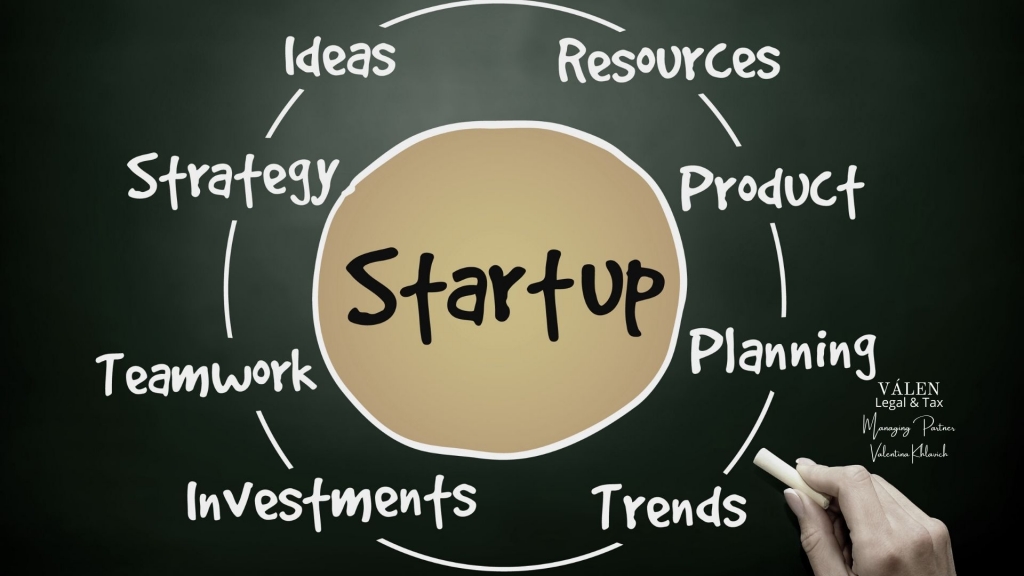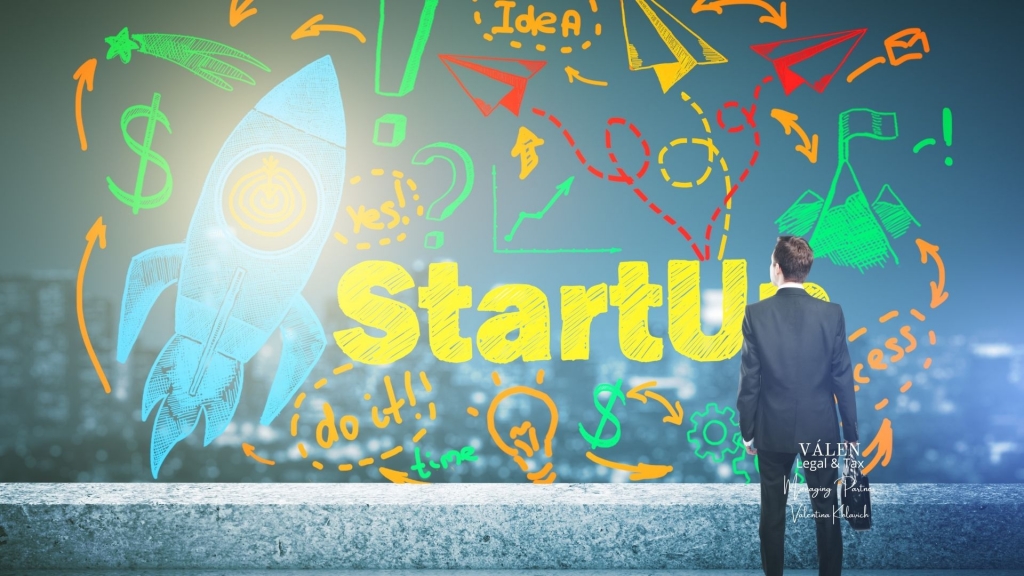How to start a startup in Russia
If a startup were easy to run, anyone would run it. We often hear about the entrepreneurial successes and profits they have brought, but there are many steps and stages ahead that need to be bridged.
For all those who have the will to try by themselves as startup founders for the first time, we have combined some of the first steps in starting and developing a startup through this text.

Success would not be so uncertain if there were a straightforward process for starting a successful startup. We hear more and more about serial entrepreneurs who have achieved several successful ventures; although we attribute part of each success in role to luck, it requires skill and knowledge. In this case, the knowledge of how to make ‘something’ out of nothing, but not anything but a product that the market needs, wants to pay for it now. Serial entrepreneurs have learned how to do it efficiently, how to invest themselves in a business opportunity that will succeed, properly allocate an essential resource of time to trial and error, and ultimately emerge as winners.
What is a startup, and why start it?
A startup company is innovative by nature, and at least part of its business model is something new, previously unexplored, and uncertain of the future. This fact is the basic definition of a startup, i.e., what distinguishes a startup from a ‘traditional business is the business model’s sustainability. A startup company is looking for a sustainable business model, and until it finds it, regardless of the past time or the size of the company – it is a startup. What is innovative in a business model is often based on technology, allowing startups to deliver value to the customer faster, cheaper, or more efficiently. In addition to greater value for users, the technology enables exponential growth of startups, i.e., scaling, another key feature of startups, and the difference between ‘traditional business.’
If this sounds like a game of significant risks and gains, it is true, but modern approaches in developing startups seek to diversify risks by applying a hidden scientific method – lean startup.
How to start a startup?
Uncertainty about the Market creates a market risk that needs to be mitigated to increase the chances of success.
When thinking about a business or startup idea, most of our pictures are in the true sense of assumption. Assumptions about potential customers, their needs, product characteristics that customers need, reasonable price, mode of communication that customers prefer… .hundreds of other assumptions about how the business model should work. With a traditional company, these assumptions are much less, and it is possible to predict steps in business development because the business model has already been developed and proven successful.
A well-known business plan can be executed, while a startup cannot write a business plan.
But there are principles and steps in the initial startup development phase needed for successful implementation. The pre-incubation program run by Russian lawyers follows this procedure:
1. Identification of problems and user segments
2. Market research
3. Problem validation
4. Solution design and validation
5. Defining the business model
6. Go to market strategy
7. Legal structure (establishment, protection of property, ()
8. Team development
9. Fundraising
Startup development is usually divided into three major phases with two milestones that can completely change the course of further action or, in the worst case, never happen:
Problem / Solution fit – a milestone to which the team precisely identified the real problem and the appropriate solution tested with potential users, i.e., the validation of the solution. In the process up to this point, the team is in the research stage, testing at high speed focused on user needs and open to accepting new learning and pivoting (changing direction while maintaining the same vision) in creating solutions or problems.
It is possible to skip this milestone by focusing directly on implementing the solution and its placement on the Market, which can often be extremely expensive and unsuccessful.
Product / Market Fit: The moment the team validates the business model, i.e., all components of the innovative business model are validated, the value provided to customers is optimal, and the startup successfully retains new customers and generates revenue. After this phase, the startup concentrates on acquiring new users and is ready for exponential growth or scaling. They were scaling before this point is one of the most common development mistakes.
This text talks about the steps to the scaling phase, i.e., achieving product/market fit, which is rightly considered the holy grail of development.
Depending on the specifics of the startup, these steps sometimes go in a different order, and their duration is significantly different, but below you will find out what it is necessary to do in each of the steps and where you can learn more.
Identification of problems and user segments
We often wonder whether to start with a good idea or a good problem. In short, the answer is – with a significant issue that as many users as possible have. “A problem is a thing or situation that is considered undesirable or harmful, and that needs to be faced and overcome.” If we compare it to an idea, the problem exists, and the idea is the fruit of our imagination. For this reason, we will validate the situation in the different development processes and more on that later.
Now we should ask ourselves – what is a good problem to solve?
The problem should be:
• Frequent – should be solved several times (ideally daily)
• Growing – the Market around the problem is growing 20% or more a year
• Popular – a lot of people or companies have a problem, and there is a large potential market for a solution
• Cost – creates high costs that accumulate over time
• Inevitable – it cannot be avoided, e.g., the law has changed
• Urgent – should be resolved now and immediately
Meeting all these criteria would be great and a bit ambitious, so try to choose a problem that meets at least two conditions. Think about today’s big companies (hint: Slack, Airbnb, Amazon) and what problems they have solved.
Read more about the topic in the article – Is it better to look for the right startup idea or solve the real problem on the way to success?
A good problem also has its users, individuals, or companies who crave its solution – we call them user segments. We speak in the plural because there are many segments with the correct segmentation, and our goal is to find those who will be the first to decide to use our solution – the earliest users (early adopters).
Market research
By choosing a problem, we have narrowed the scope, we have some knowledge about the problem and the users, but we assume most of that. Now is the time to come up with a solution – NO!
We are still far from a solution because we must first find out how much we do not know, and this is one of the essential parts of the early startup phase in search of a problem/solution fit.
Market research aims to find out as much information as possible about the problem, its characteristics, how users experience it, whether someone is already solving it, why existing solutions are not good enough, and the like.
In addition to a better understanding of the problem and the user, market research should answer the size of the Market and its growth. Two key market characteristics determine a startup team’s potential and ultimate success.
Given today’s availability of information and (misinformation), it is straightforward to spend a considerable amount of time searching the web. The problem is that the amount of time invested is not proportional to the quality of the results, but it is necessary to determine what we are looking for and our research strategy.
The detailed market research process is described in this text – Startups, do you know the Market in which you will sell your product?
Problem validation
Validation or confirmation by objective evidence is perhaps the most common word you will hear or should) at the beginning of the startup journey. It is a critical ingredient in the successful realization of serial entrepreneurs and requires great discipline and effort.
The first phase is the validation of the problem through which we want to answer some of the following questions:
• What is the main problem of your customer?
• Would you pay for his solution?
• What does the day in the customer’s life look like now?
• What would that day look like with a solution to the problem?
The only correct way to validate problems and find out these answers is to communicate directly. There is no other way that is as valuable and quality as a personal structured interview with the earliest user.
Therefore, there are two prerequisites for problem validation:
1. Clearly defined problem – from which assumptions arise
2. Precisely selected user segment – which allows us to find and identify them
We validate all the assumptions that we have singled out as crucial and risky for the success of a possible solution to the problem. We call the validation process a user experiment that involves communicating with a defined user segment and testing critical assumptions followed by selected metrics. The best experiment is to talk to the user with predefined goals and questions prepared according to the correct conversation. In addition to talking to customers, it is sometimes advisable to speak to experts in the field of suppliers of your potential customers. To prepare and conduct a user interview, you can use the instructions for adequately interviewing users and a template for preparing a discussion organized by Valen academy.
You can also read some of the critical interview tips in the article How to do interviews with users? ‘Get out of the building.’
The point of talking to users is to collect learning-validated learning. In the next step, they can confirm an existing assumption, refute it, or generate a new hypothesis to be tested. Validated learning is pure knowledge and represents the most significant value of startups at an early stage. It’s as if you’ve dug up a nugget of gold from the ground that now needs to be shaped into a piece of jewelry.
And don’t skip this step!
Solution design and validation
Reaching this stage is already quite a success, according to the experience of more than half of those who start a startup do not get here or come too early and find nothing at the destination.
We are in the fourth step, and for the first time, we mention the solution as a validation. We still do not know the best answer to the user’s needs, and we have to design a solution based on previous learning, which we will then validate through user experiments.
At this stage, there are terms such as MVP – Minimum Viable Product, which is the version of the product that can bring the team the most significant amount of validated learning with minimal investment of resources. We wrote more about this topic in Lean Startup: Minimum Sustainable Product (MVP) as a strategy and process.
So far, we have learned a lot about the problem, and in the solution validation phase, we need to know even more about the solution.
The procedures of user experimentation in the solution validation phase become more complex, but to that extent, validated learning has a more excellent value. Experimentation techniques at this stage include landing page design, concierge methods, mockup, prototyping, comprehension testing, and the like. These terms may not mean much to you, but unfortunately, this text would soon turn into a book if we went into detail. All those who want to learn more can apply for one of the startup pre-acceleration programs run by Valen academy in Moscow, Russia .
If you want to organize a program for startup teams or have questions about this process, let us know!
The ultimate goal of the solution validation phase is the first milestone in the development of a startup – problem/solution fit. You have found a solution that suits the users and validated it.
Remember, it’s exciting to build a company, but the most outstanding value comes in the discovery phase.
Defining a business model in Russia
The sustainable business model is the goal of every startup, and previous activities to validate the solution have strengthened the value proposition as the axis of every business model. In addition to value propositions, a business model needs to be devised in desirability, feasibility, and sustainability.
Thus, it is necessary to find optimal distribution and communication channels with users, specify the activities needed to create value, the essential resources we must have at our disposal, and the partners required for implementation. Ultimately, for a business model to be sustainable, it is necessary to make it profitable and balance revenues with costs.
In each of the standard nine components of the business model, further user experiments need to be conducted and assumptions tested to sustainability. This process is carried out in parallel with the following activities: entering the Market, forming a team, or developing a legal structure, depending on the needs and how individual challenges come to the team.
Of all the steps so far, this one is the longest-lasting, and if successful, it leads the team to product/market fit – the holy grail of every startup.
Go to market strategy
In parallel with the definition of the business model, preparations for entering the Market are underway. It is understood that from the moment when it is clear what kind of solution customers expect, such a solution is gradually being developed, and in the commercial sense, the acquisition of the earliest users and customers is being prepared.
We call the plan to reach new customers a Go-to-market strategy. It is a short-term strategy for launching a new product or entering a new market. It differs from a marketing strategy that is continuous to maintain market share and growth. It also differs from a vision in that it represents only the first step in realizing a dream.
You can read how to enter a new market in the article Marketing strategies for entering a foreign market.
In the Go-to-market strategy, it is essential to determine:
Focus – what is unique in our value proposition, which the user is, and how we can find him. These are usually the earliest users, and we need to focus on them. Trying to sell to everyone is not a good strategy because we cannot be everything to everyone, and we do not have the resources for such a general operation.
Channels – identify all available channels for the possible acquisition of new users. Help and inspiration in this can be The Bullseye Framework through which it is possible to choose the most effective.
Priorities: When we talk about the most efficient channels, we mean those that will bring the most significant number of new users for the least money invested (including the cost of time). Channel priorities are selected based on goal impact, reliability, and availability.
Metrics – making decisions without metrics is piloting with your eyes closed. The key metric is the CAC (Customer Acquisition Cost) which helps us calculate the return on investment of each distribution channel and decide in which channels we want to invest more funds.
It is important to emphasize that the Go-to-market strategy is executed before the product/market fit and that it is not scaling but serves as a market approach during the business model validation process. Trying to rise at this stage is premature and can be disastrous.
Legal structure (establishment, protection of property)
When the founding team has progressed in customer development and product development, after the problem-solution fit phase or generating the first revenues, it is time to think about the business’s legal structure.
When establishing a legal entity, it is recommended to install a limited liability company (LLC Russia , Ltd in the UK and LLC in the US) because the personal liability of each founder is limited (compared to, for example, a business where the owner is liable with all his assets).
Establishing such a company also brings costs such as paying external accounting or paying contributions for the company’s director, which novice entrepreneurs should pay attention to and select a company only when necessary to enter the Market.
When the founders start the process of founding a company, when choosing a legal entity, they should pay attention to:
• Ease of doing business
• Presentation of the company to customers
• Operating expenses/taxation
Startups are agile, fast, disruptive – but states and their legal framework are not. Startups are looking for digital business (signing documents online), “Stock Options Pool” (SOP – the right to buy shares in the company at a discounted price after a certain period), and the availability of various “classes” of shares in the company, which will be discussed in Fundraising ). As a rule, all this is not yet possible in most EU countries, and for these reasons, startups are forced to establish or relocate their parent company to a country where possible. It is trendy to start a business in the state of Delaware, USA, and you can read more about it here.
Unfortunately, discrimination is always present around us, no matter which country we work in or do business in. Startup founders, therefore very often set up companies (or subsidiaries) in the countries from which their customers come (UK, USA, etc.) and present themselves as a British or American company. The same goes for Russian customers who prefer to buy from a Russia n company than from a foreign one.
Protection of property (IP – Intellectual Property) is possible and, in some cases, necessary (e.g., technology transfer, BioTech), but each case needs to be carefully evaluated and see the advantages and disadvantages of this step. However, the more important goal of the startup should be to “push” sales and further product development and thus beat the competition.
Team development
Interdisciplinarity and complementarity are the main features of founding teams. It is recommended that the team is not one person, but 2-3 people who differ and complement each other with their skills and approach to solving problems. If you work on a technology startup and all developers, you will delve into product development and put sales aside. If you all come with experience in sales, you will need someone who will also develop that product. Although in the beginning, “everyone does everything,” certain functions in a startup and who is the main one responsible for a particular area should be known from the start.
For startups in the early stages of business, in the Russian lawyers, we see a common problem in the shares among the existing co-owners in the startup. It is crucial that you agree at the outset on what percentage of co-ownership each of the founders has.
There is no rule as to how much each person should have but be guided by the fact that each cofounder is willing to work and contribute to the development of startups 5+ years. It is easiest to distribute shares equally to everyone, which can later prove to be a mistake if one of the cofounders leaves the startup or no longer contributes at a later stage.
One way to solve such a problem is “reverse vesting,” which is very similar to the above-mentioned “Stock Options Pool.” The difference here is that the cofounders have the right to, or “get,” their shares in the company after a certain period (e.g., four years), and they do not have that share from the first day of founding the company. Reverse vesting is not possible in all countries due to the legal framework.
To encourage the development of startup ecosystems and the formation of startup teams, Russian lawyers are leading the TeamUp project. TeamUp Live events are also organized as part of TeamUp to help startup founders at an early stage find their first collaborators, cofounders, employees or mentors in a fun and effective way.
Fundraising

Before the startup decides to go into the fundraising phase, it is necessary to make a “pitch deck,” i.e., a short presentation (up to 15 slides) that covers the things mentioned in this article.
From the pitch deck, the investor can see in a very concise and clear way:
• The problem you are solving
• Your product
• Why now
• Market potential and size
• Competition
• Your competitive advantage (Unique Value Proposition)
• Business model
• Team
• Finance (past and future)
• What you are looking for – the amount of investment, what you will spend it on, what you will achieve with it and in what period
Depending on what stage you are in, i.e., how long you have been operating and what kind of income you are generating, the cycle of financing startups is shown below. Unfortunately, most startups fail in the beginning, and the most common reasons are that the team is falling apart, the Market is not looking for your product, or you are not getting funding.
If you decide to go through funding from Venture Capital funds, you are expected to have an absolute commitment to the startup (full time), rapid growth, and sales of the company (or certain shares). The investor is there to support you on your financial and advisory path (expanding into new markets, looking for new employees, looking for new funding sources).
Before you go to contact investors, be sure to check these things and whether you fit into their investment strategy:
• In which countries it invests (where the company should be established or where at least part of the team works)
• In which industry it invests (FinTech, PropTech, AgriTech, BioTech, etc.)
• In which business models it invests (B2C, B2B, marketplace, B2G, etc.)
• What stage is it investing in (Pre-Seed, Seed, Series A, etc.)
Final thoughts on starting a startup business
The startup rodeo is very exciting but also uncertain. It’s exciting to build a company, but the most outstanding value a startup team creates before a product-market fit. Initial steps are often crucial for ultimate success, so you should not try to bypass or speed them up but focus on the actual value of research.
The steps outlined in this text can help you create a product and startup that will better survive in the Market, but your efforts and exceptional sacrifice can only do this. By further researching these topics and networking with other startup founders, you will learn much more and create a knowledge base for developing your startup.
Finally, here are some tips for anyone who wants to start a startup:
1. Market determines success – choose it carefully
2. Put users first and involve them in development from the earliest moments
3. Focus on revenue generation and carefully choose activities that bring more excellent value to the user
4. Test everything and make decisions solely based on metrics
5. Don’t do it all over again; use it almost when available
6. Be passionate about running a startup
7. Surround yourself with people who want to help you sincerely, listen to the advice of the experienced, but ‘You are the boss!’ and you make the final decision
8. Research investor strategy before contacting them
Our experts in Russia are ready to provide comprehensive support for foreign entrepreneurs and businesses, they will help you at all stages.
From a preliminary assessment of the situation and choosing the best solution to obtaining all the necessary registration documents and getting started.
By seeking legal advice, you will receive the following guarantees: the result will be achieved within a certain period, and any issue will be resolved as quickly and efficiently as possible, and all this for reasonable money.
Besides, you will protect yourself from possible risks and mistakes in opening company in Russia , which can turn out to negative consequences.
Prices for service of opening LLC or JSC in Russia



